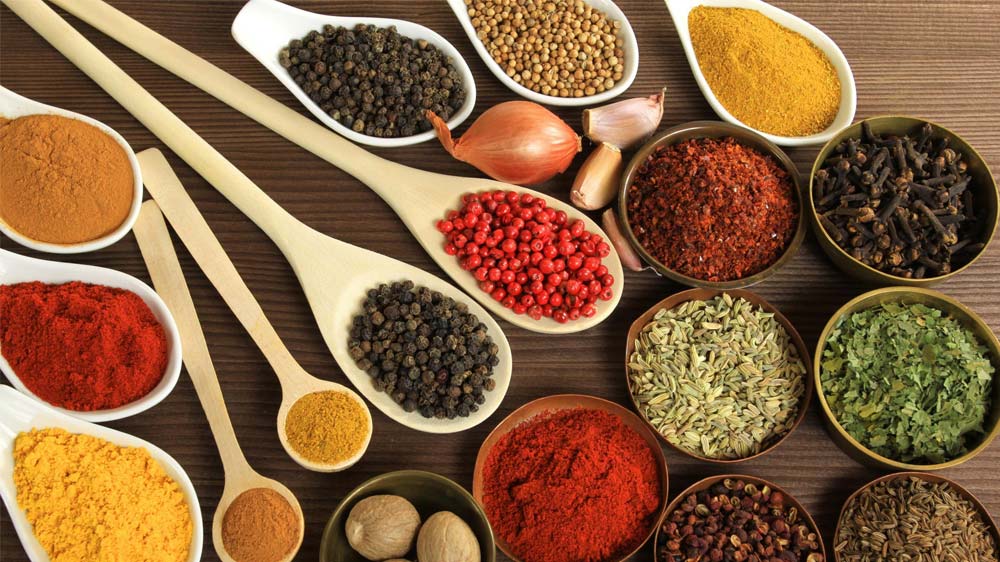Delve into the captivating realm of Indian spices, where history, culture, and commerce converge. India’s distinction as the “spice bowl of the world” owes itself to a climate and sprawling landscapes that nurture a splendid array of spices. This legacy of cultivating and exporting these treasures continues to flourish, driven by unyielding global demand. Even amid a turbulent year, the allure of Indian spices remained unscathed, defying economic uncertainties that gripped other sectors. This consistent demand opens avenues for aspiring entrepreneurs and seasoned exporters alike. Yet, the path to successful spices export from india demands traversing a landscape of legal intricacies and regulations. This blog serves as your guide, offering insights into the labyrinth of exporting. Whether you’re an industry veteran seeking diversification or a novice eager to partake in India’s aromatic heritage, here, you’ll uncover the roadmap to navigate this journey.
How the Spice Board of India is helping out exporters?
1. Development & Deployment of Improved Production Methods
The Spice Board engages in rigorous technological, scientific, and economic research to identify and implement advanced production methods. This includes research into crop varieties, cultivation techniques, pest and disease management, and post-harvest practices. By introducing innovative approaches, the board ensures that Indian spice growers have access to cutting-edge knowledge that can significantly improve the quality and quantity of their produce.
2. Training Farmers & Agriculturalists
Recognizing the significance of knowledge dissemination, the Spice Board conducts various training programs to educate farmers and agriculturalists about the latest technologies and best practices. Workshops, seminars, and field demonstrations are organized to equip them with the skills needed to adopt modern agricultural methods. These efforts lead to increased production yield, improved quality, and enhanced sustainability in spice cultivation.
3. Facilitating Material & Fiscal Support
The Spice Board extends material and fiscal support to empower spice growers further. This includes providing essential resources such as high-quality planting materials, seeds, and saplings. Through subsidies and grants, financial assistance is also offered to encourage investment in modern infrastructure, irrigation systems, and equipment. The board enables growers to modernize their operations and enhance productivity by alleviating financial barriers.
4. Providing Registration for Legalizing Export Business
The Spice Board aids aspiring spice exporters in navigating the legal landscape by offering registration services. This step is crucial for legitimizing export businesses and ensuring compliance with regulatory standards. By facilitating the registration process, the board contributes to building a robust and transparent spices export from india ecosystem.
5. Education and Promotional Materials
Another vital role of the Spice Board is educating importers and exporters about the intricacies of the spice trade. The board produces educational and promotional materials that offer insights into quality standards, market trends, export procedures, and documentation requirements. Distributing these resources equips stakeholders with the knowledge needed to engage effectively in international trade, thereby boosting the overall competitiveness of Indian spices in the global market.
How can you start your business of spices export from india?
- Spices Manufacturer
Become a hands-on spices manufacturer by overseeing the process from cultivation to packaging. This grants control over product quality. Choose your spices, acquire land, invest in processing/packaging equipment, and build a network of suppliers and distributors for global reach.
2. Wholesale Trader
Engage in wholesale trading by connecting spice manufacturers with global buyers. Procure bulk spices, guarantee quality, and distribute to international wholesalers, retailers, or distributors. Build strong manufacturer relationships, negotiate pricing, and establish a reliable distribution network for diverse market coverage.
3. Spices Trader
Engage in spices trading by sourcing from manufacturers, wholesalers, and local markets, then selling to global buyers. Understand market trends, pricing, and quality. Establish a network of reliable suppliers and buyers for consistent trade flow.
4. Third-party Manufacturer
Opt for collaborating with third-party manufacturers if you need more resources or know-how for cultivation and processing. You design your spice blends/products and team up with capable manufacturers to produce them. This flexible model cuts initial costs but verifies that partners uphold your brand’s quality and authenticity standards.
5. Exporter
Specialize in exporting spices from India to global markets. Coordinate logistics, secure export licenses, and ensure regulatory compliance. Collaborate with manufacturers, traders, and wholesalers to source products for international buyers. Success requires attention to detail, effective communication, and expertise in export documentation.
What are the essential documents required for spices export from india?
Here’s an explanation of the documents required:
- Registration with the Ministry of Corporate Affairs (MCA)
Registering your export business or brand with the MCA is essential. This process typically involves filing an application online and providing details such as the business name, partner information (if applicable), origin, profit-sharing ratio (if any), and address proof. This registration formalizes your business entity and its legal standing.
2. FSSAI Food License
Obtaining a Food Safety and Standards Authority of India (FSSAI) food license is mandatory for any food-related business operating in India, including spice exports. This license ensures that your products adhere to food safety and quality standards, bolstering consumer confidence in your exports.
3. GST Registration
Goods and Services Tax (GST) registration is a crucial requirement for businesses intending to export spices from India.
4. Import Export Code (IEC)
It’s a crucial document that serves as an identity for businesses engaged in international trade, allowing customs clearance and regulating trade flow. Obtained through an application process, the IEC is essential for seamless cross-border transactions, ensuring compliance and legitimacy.
5. Certificate of Registration as Exporter of Spices from the Spice Board India
Obtaining the Certificate of Registration as Exporter of Spices (CRES) from the Spice Board India is a significant legal document for exporting spices globally. The Spice Board enforces guidelines to ensure the hygiene and quality of Indian spices exported to international markets. This certification showcases your commitment to quality and adherence to industry standards.
Summary – Navigating regulations and documents is key in the world of spices export from india. From MCA registration to securing the IEC, these steps lay the foundation for a successful journey. Adding to this journey is Amazon Global Selling, revolutionizing the way Indian spice exporters reach global markets. This platform acts as a conduit, connecting exporters with a vast international audience and streamlining logistics. The fusion of tradition and innovation promises a future where Indian spices not only tantalize taste buds worldwide but also drive economic growth. As spices continue to transcend borders, the partnership between India’s rich heritage and Amazon Global Selling’s modern approach underscores a promising path for the spice export industry, a fusion of tradition and innovation that amplifies the aroma of Indian spices on the global stage.

 Keith Gill Net Worth 2024: How Much is the American financial analyst and investor Worth?
Keith Gill Net Worth 2024: How Much is the American financial analyst and investor Worth? Melinda French Gates Net Worth 2024: How Much is the American Philanthropist Worth?
Melinda French Gates Net Worth 2024: How Much is the American Philanthropist Worth? GameStop Shares Surge 75% as Trader ‘Roaring Kitty’ Who Drove Meme Craze Posts Again
GameStop Shares Surge 75% as Trader ‘Roaring Kitty’ Who Drove Meme Craze Posts Again Microsoft Ordered to Pay $242 Million in Patent Infringement Case Over Cortana Voice-Assistant Technology
Microsoft Ordered to Pay $242 Million in Patent Infringement Case Over Cortana Voice-Assistant Technology Srikanth Bolla Net Worth 2024: How Much is the Industrialist Worth?
Srikanth Bolla Net Worth 2024: How Much is the Industrialist Worth? Sam Rubin Net Worth 2024: How Much is the American Journalist Worth?
Sam Rubin Net Worth 2024: How Much is the American Journalist Worth? Glenn Hutchins Net Worth 2024: How Much is the American Investor Worth?
Glenn Hutchins Net Worth 2024: How Much is the American Investor Worth? Pfizer Agrees to Settle Over 10,000 Zantac Lawsuits Following Sanofi’s Lead
Pfizer Agrees to Settle Over 10,000 Zantac Lawsuits Following Sanofi’s Lead